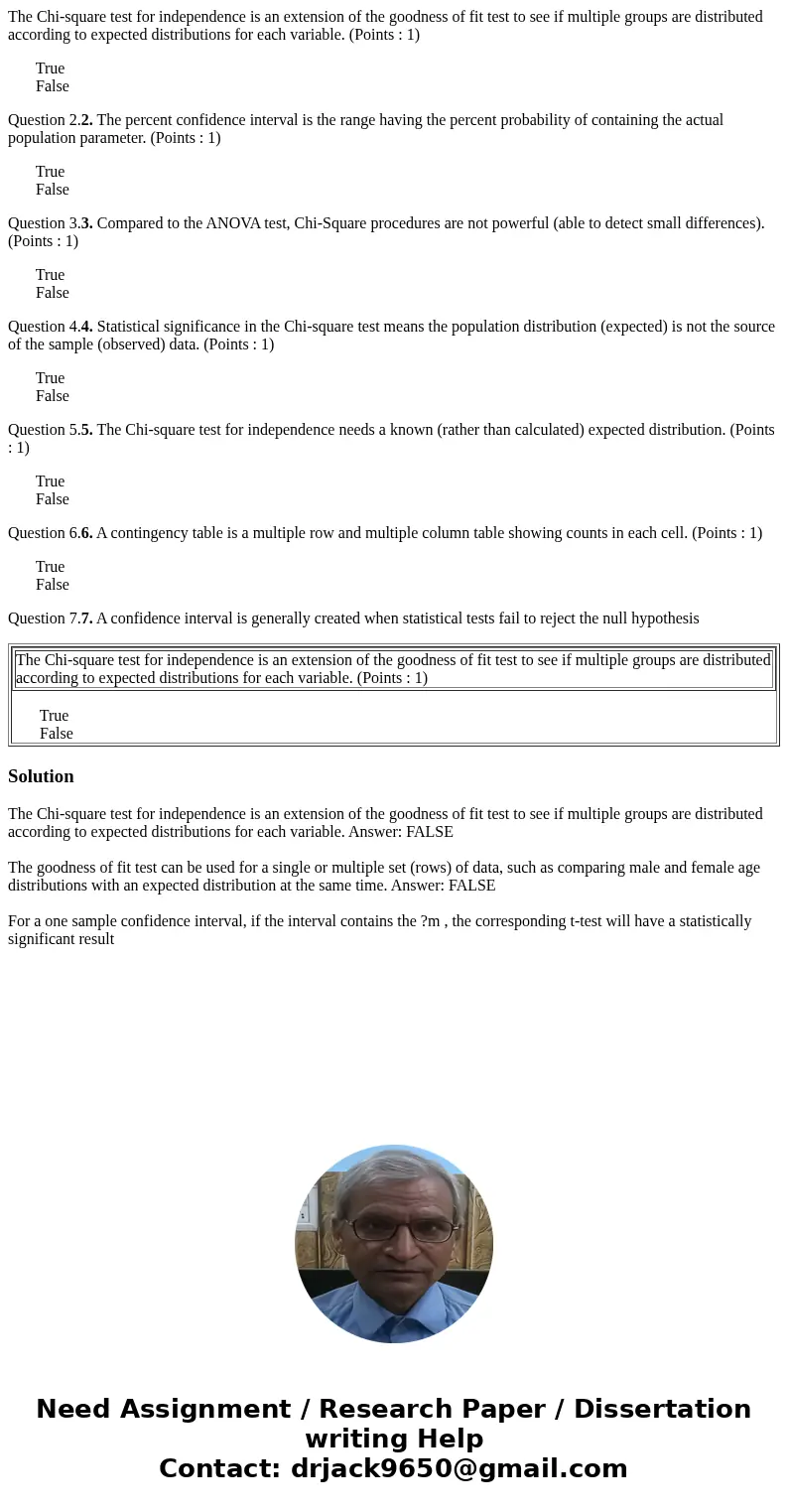The Chisquare test for independence is an extension of the g
The Chi-square test for independence is an extension of the goodness of fit test to see if multiple groups are distributed according to expected distributions for each variable. (Points : 1)
True
False
Question 2.2. The percent confidence interval is the range having the percent probability of containing the actual population parameter. (Points : 1)
True
False
Question 3.3. Compared to the ANOVA test, Chi-Square procedures are not powerful (able to detect small differences). (Points : 1)
True
False
Question 4.4. Statistical significance in the Chi-square test means the population distribution (expected) is not the source of the sample (observed) data. (Points : 1)
True
False
Question 5.5. The Chi-square test for independence needs a known (rather than calculated) expected distribution. (Points : 1)
True
False
Question 6.6. A contingency table is a multiple row and multiple column table showing counts in each cell. (Points : 1)
True
False
Question 7.7. A confidence interval is generally created when statistical tests fail to reject the null hypothesis
True |
Solution
The Chi-square test for independence is an extension of the goodness of fit test to see if multiple groups are distributed according to expected distributions for each variable. Answer: FALSE
The goodness of fit test can be used for a single or multiple set (rows) of data, such as comparing male and female age distributions with an expected distribution at the same time. Answer: FALSE
For a one sample confidence interval, if the interval contains the ?m , the corresponding t-test will have a statistically significant result

 Homework Sourse
Homework Sourse